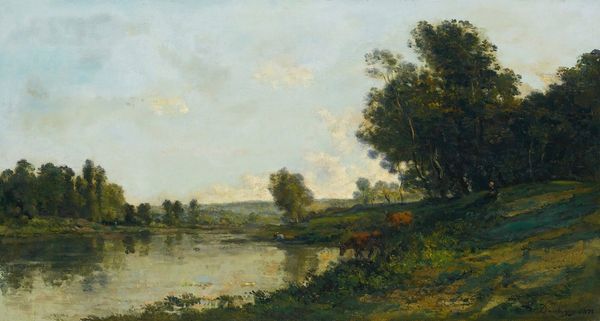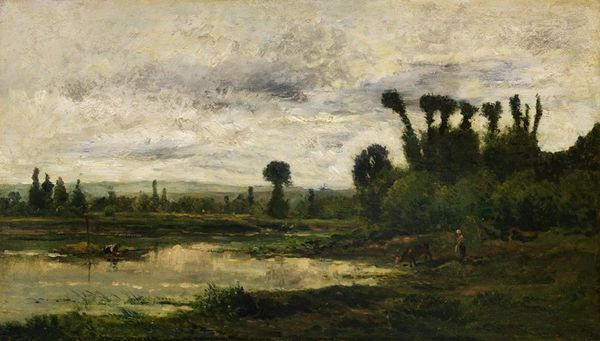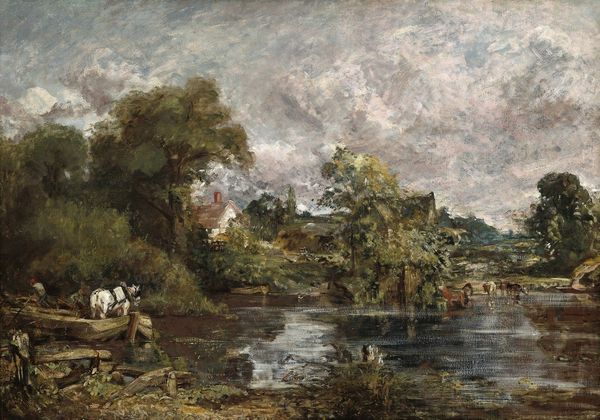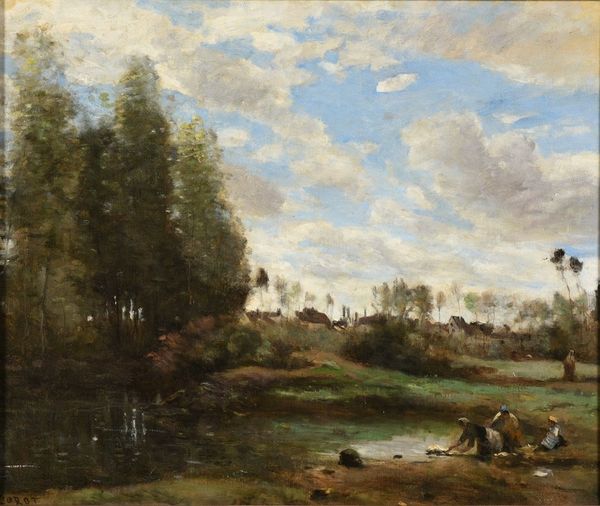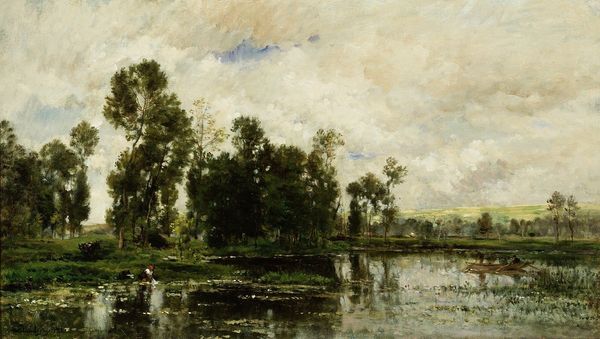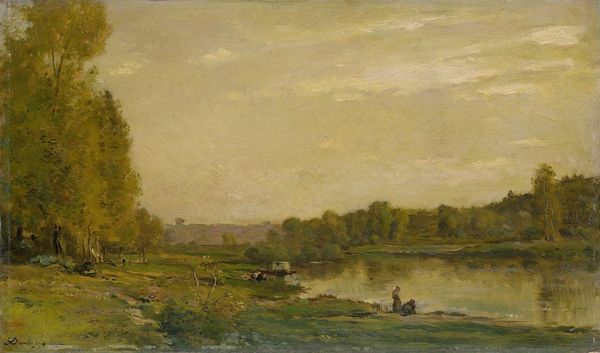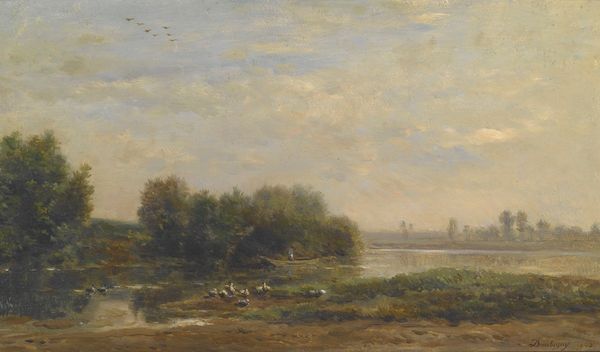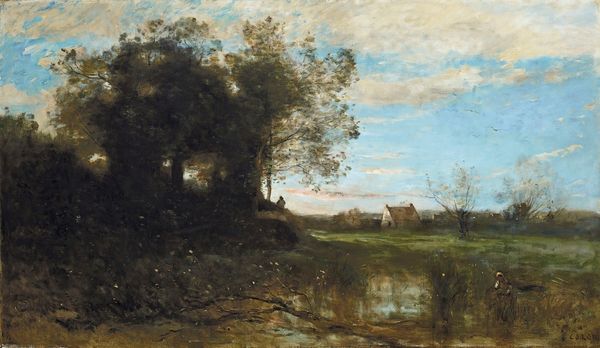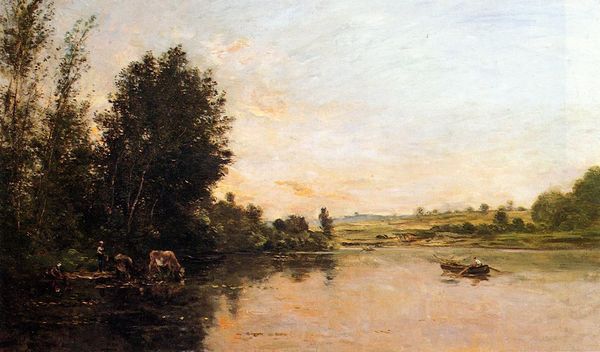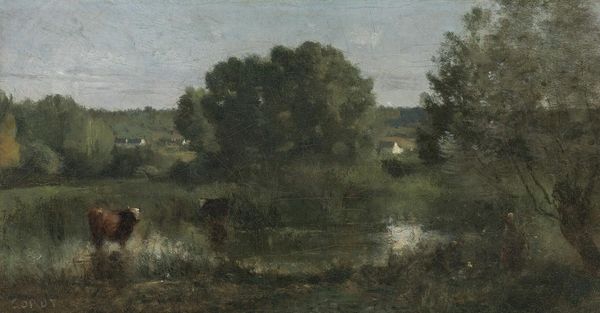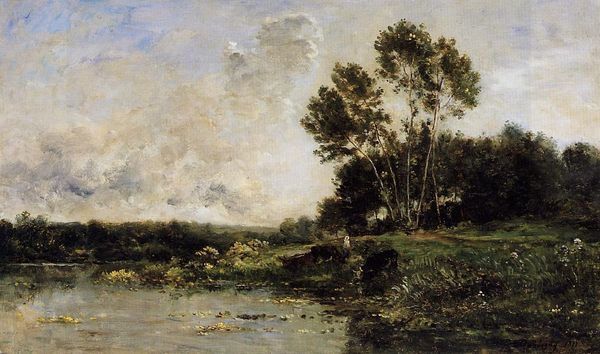
Copyright: Public Domain: Artvee
Editor: Here we have Charles-François Daubigny's "Ducklings on a Lake," an oil painting from 1873. There's such a stillness to it, almost melancholy. The gray sky sort of dominates the scene. How do you interpret this work? Curator: The melancholic atmosphere you pick up on is interesting in relation to the social upheaval of the time. Consider 1873 in France – just a few years after the Franco-Prussian War and the Paris Commune. This wasn’t just a landscape; it could be read as a yearning for a lost, perhaps idealized, rural stability in the face of rapid urbanization and political unrest. Do you see how the seeming simplicity of the scene belies potentially complex emotions tied to the changing social landscape? Editor: That’s a really insightful way to frame it. I was just thinking about the colors and composition, not so much the historical context. Curator: It's vital to think about art history in dialogue with contemporary theory and critical race theory, too. How do idyllic depictions of nature, such as these, sometimes mask or erase histories of land use, labor, and ownership? Who has access to these 'peaceful' spaces, and whose stories are excluded from this narrative? Editor: So, we can appreciate its beauty while still questioning its underlying assumptions about class and privilege? Curator: Exactly. It’s about looking beyond the surface and asking who is included, who is excluded, and whose story is being told, or not told. Editor: I hadn't considered those questions when looking at Impressionist landscapes. It's given me a lot to think about! Curator: That's the point, isn't it? To continually re-evaluate our perspectives and challenge what we think we know.
Comments
No comments
Be the first to comment and join the conversation on the ultimate creative platform.



